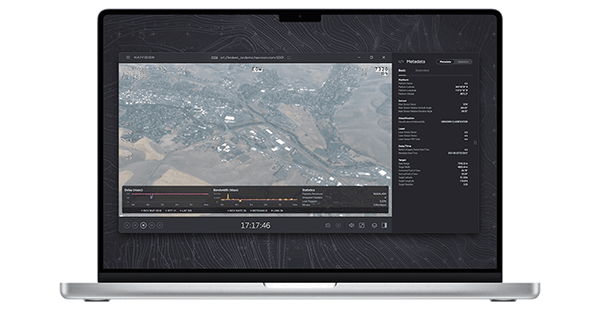We’re starting off the new year with a look at some of the most interesting video streaming stats, facts, and trends for 2021. 2020 was not, by any definition, a typical year. Not surprisingly, lockdown measures have meant that people are spending more time at home, and, as a result, both television watching and online streaming surged during the COVID-19 outbreak.
But the pandemic has not only changed the where, what, and how we are consuming content but also the ways the industry is creating and delivering it. Here are 11 of the top broadcast video trends we’ll be keeping a close eye on in 2021.
1. COVID-19 is accelerating the transition to IP.
The reality of unexpected and sudden disruption and the forced adoption of working from home as a result of COVID-19 is kicking IP transformation into overdrive. Broadcasters are far more willing to experiment with remote IP-enabled workflows as they are vital to their current and future success. When polled during a recent technology webinar 79% of broadcast and media professionals responded that the pandemic has accelerated the transition to IP within their organization. Haivision
2. Enabling remote collaboration is the latest challenge facing broadcasters.
In Haivision’s Broadcast IP Transformation Report 2020, the biggest challenge that broadcasters were faced with according to the survey was transitioning to IP. At the same time broadcasters are tackling this challenge head on as they facilitate remote collaboration over IP for their home-based workers. While not yet published, early results from our 2021 survey indicate that this remains the number one concern closely followed by enabling remote collaboration among distributed workforces.
3. Collectively, we’re watching more content since the outbreak.
87% of U.S. consumers and 80% of UK consumers say they’re consuming more content – broadcast TV, online videos, and online TV streaming take the top spots overall for increased media consumption. GWI Coronavirus Research 2020
4. Video streaming subscription growth set a new record in 2020.
The annual increase in global subscription-based video-on-demand (SVOD) customers in Q3 2020 reached 217.6 million, the highest number ever, beating the previous record of 211.7 million in Q4 2018. The annual increase grew for the third quarter in a row, after declining for the previous four quarters from Q1 2019 to Q4 2019. The trend reflects the impact of the Covid-19 pandemic on video consumption as well as the popularity of new streaming services such as Disney+. Strategy Analytics: Q3 2020 Global VOD Service Competitor Review
5. Consumer behavior around media consumption is shifting.
While much of the shifting behavior involves streaming on-demand video, consumers continue to spend the lion’s share of their TV time with live and time-shifted programming. In fact, second-quarter 2020 live and time-shifted TV consumption among people 18 and older increased by an average of 4 minutes per day (to 4 hours: 8 minutes) from the prior year. That dwarfs the 1 hour and 14 minutes we spend with our TV-connected devices each day. Nielsen
6. Cord-cutting is still on the rise.
More consumers are choosing to cut the cord by abandoning traditional pay-TV (cable, satellite, and telecom TV providers). The number of US households with cable, satellite, or telecom TV packages has dropped 7.5% year-over-year, the biggest such drop ever. Furthermore, that total is down 22.8% from pay-TV’s peak in 2014. By the end of this year, 31.2 million US households will have cut the cable TV cord in aggregate. And 6.6 million households will cancel their pay-TV subscriptions. By 2024, more than one-third of US households will have cut the pay-TV cord. eMarketer
7. Younger generations are changing how they consume content.
Audiences, especially Millennials and Generation Z, aren’t abandoning live content – they’re simply changing how they’re watching. Younger people are nearly 62% more likely to not watch terrestrial TV at all; 17.3% say they didn’t watch any during the week of the survey versus only 10.7% of those aged 41-66 according to data from Attest’s US Media Consumption Report 2020.
8. Live stream platforms are gaining popularity.
Many Millennials and Gen Z’s are turning to live stream platforms such as Twitch, YouTube Live, and Facebook Live. While there were gains across the board, they weren’t distributed evenly. Twitch – the biggest live-streaming platform – reached a viewership milestone in October 2020, with more than1.6 billion hours watched, that’s 99% year-over-year growth. StreamElements and Arsenal.gg
9. When it comes to live viewing, latency matters.
64% of viewers say they’re more likely to watch live events online if the stream is not delayed from the TV broadcast according to research conducted by Limelight. Using low latency streaming technology such as the SRT protocol, live video streaming services are bringing end-to-end latency on par with traditional television broadcasts and making streaming of live sports even more appealing than ever.
10. The reopening of live sports boosted viewership.
Fans were hungry for football in 2020. Time spent viewing live NFL games increased by 41% year over year in Q3 2020. Daytime games scored the most viewership gains during this time, up 63%, as the housebound climate offered more availability for daytime viewing. By contrast, primetime Sunday, Monday, and Thursday night games captured a more modest 32% increase in viewing time year over year in Q3 2020. TVs continued to win NFL viewing, with the largest growth in viewing time for both daytime and primetime NFL viewing, up 55% and 29% respectively. TV totaled 67% of all NFL viewing while mobile captured 13% and PC just 6% of NFL viewing time in Q3 2020. Conviva
11. Esports viewership flourishes during the pandemic.
Already booming pre-pandemic, esports has managed to withstand much of the disruption faced by other industries. With entertainment options limited, the world has turned to new mediums for entertainment during COVID-19 and weekly game streaming hours watched have dramatically increased year over year. In fact, the average weekly hours watched this year eclipsed half a billion, a 73% increase from last year’s average (291 million). League of Legends, published by Riot Games, continues to lead as the most popular global esports title with 543,203,442 hours watched in Q3 of 2020. Streamhatchet
What to Expect in 2021
While some of these broadcast video trends may begin to slow down or take another turn once we get through the pandemic, many, such as cord-cutting, video streaming, and the move to IP based workflows will not only stay but continue to accelerate. One thing is for sure, the video broadcast landscape will look very different by the end of 2021.




























